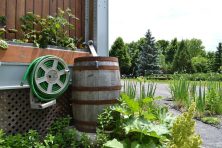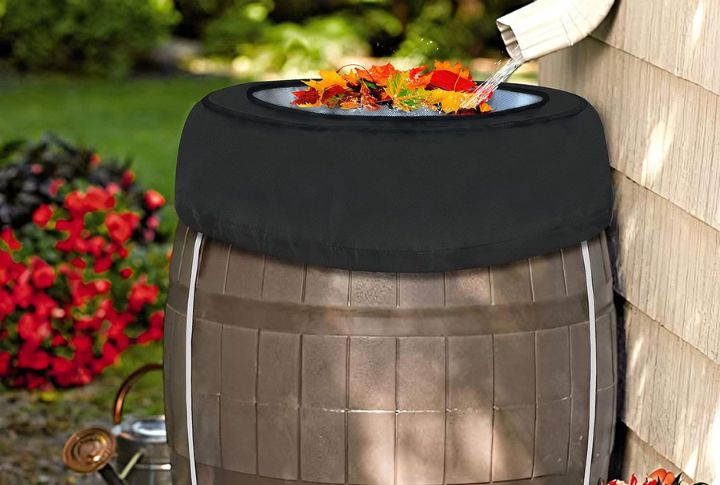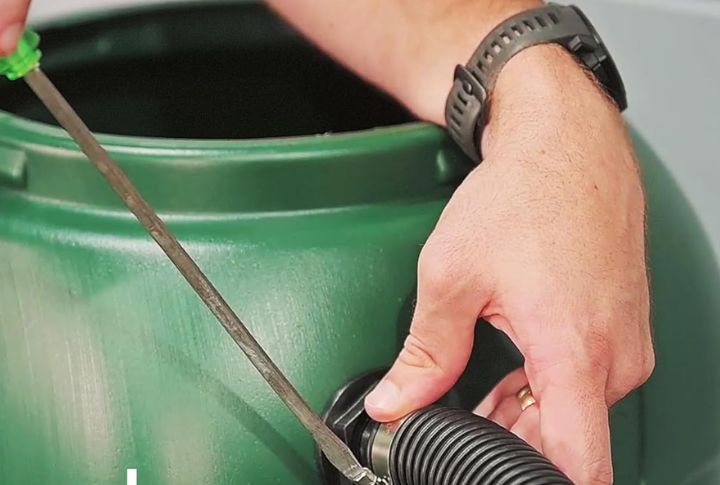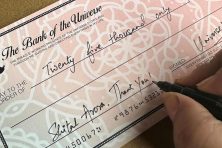Rainwater Conservation: Here’s How A Rain Barrel Can Save You Big

Every time it rains, thousands of gallons of water rush off rooftops and disappear into storm drains—wasted potential right before our eyes. But with the right system in place, you can capture those fleeting showers and turn them into a steady, money-saving resource for your home. Let’s explore how you can make this happen.
Rethinking Rainwater Collection

Rain barrels are more than old-fashioned water savers—they’re smart tools for modern conservation. By capturing runoff from rooftops, they reduce reliance on municipal water. A single storm can fill a 50-gallon barrel, easing demand during dry spells and instantly lowering household usage.
Make money easier. Sign up for The Penny Hoarder’s newsletter today.
How A Rain Barrel Works

Connected directly to downspouts, rain barrels store runoff that would otherwise be lost. Most include a mesh screen to block debris and a spigot for easy access. A typical system collects about 0.6 gallons per square foot of roof area during a one-inch rainfall.
More From The Penny Hoarder: 8 Ways Savvy Shoppers Are Outsmarting Inflation at the Grocery Store
Sizing Up Your System

Not all rain barrels are equal. Some models hold as little as 30 gallons, while others exceed 100 gallons. For a roof area of 1,000 square feet, a 50-gallon barrel may overflow during a moderate storm, so you may need overflow valves and additional barrels.
More From The Penny Hoarder: How to Pay off Credit Card Debt in 2025
Installation Is Straightforward

Setting up a rain barrel requires only basic tools. Most installations take under an hour and involve attaching a diverter kit to the downspout. Elevating the barrel on cinder blocks improves water pressure for hose use and makes the spigot more accessible.
More From The Penny Hoarder: Budgeting 101: How to Budget Money
Maintenance Keeps It Flowing

Seasonal cleaning prevents clogs and mosquito breeding. Screens must be cleared of leaves, and barrels emptied before winter in cold regions. Stagnant, unchecked water can develop algae or foul odors, especially in unsealed containers without UV protection or tight-fitting lids.
More From The Penny Hoarder:How to Pay off Credit Card Debt in 2025
The Real Cost Savings

Households can cut their water bills by up to 40% in summer with regular use of collected rainwater. Lawn irrigation, garden watering, and even car washing consume significant gallons. A 55-gallon barrel can replace over 1,300 gallons annually if used consistently.
More From The Penny Hoarder:8 Ways Savvy Shoppers Are Outsmarting Inflation at the Grocery Store
Rebates And Incentives Help

Many cities and water districts offer rebates for installing rain barrels, often covering 50–100% of the cost. Los Angeles, for example, provides up to $100 per barrel (limit of four per household). Check with local utilities; some programs even include free delivery or installation for qualifying households.
More From The Penny Hoarder: The 28 Best Side Hustles: Our Top Picks to Help You Make More Money
DIY Options Are Everywhere

Building your own rain barrel is inexpensive and straightforward. Food-grade 55-gallon drums, available at feed stores or recycling centers, make excellent bases. With a spigot, mesh screen, and overflow valve, you can assemble a functional unit for under $50 using widely available components.
More From The Penny Hoarder: Best Cash Back Rewards Credit Cards to Earn Money While You Spend in 2025
Plants Love Rainwater

Tap water can harm sensitive plants due to its chlorine and fluoride contents. In contrast, rainwater is naturally soft and slightly acidic, making it ideal for gardens. Studies show that potted plants and vegetable beds thrive better when irrigated with untreated rainwater than with the city supply.
More From The Penny Hoarder: Our Picks for The Best Bank Promotions This Month
Not For Drinking—Without Treatment

Rainwater from roofs may contain bacteria, bird droppings, or roof residue. It’s safe for non-potable uses, but not for drinking unless filtered and disinfected. While filtration systems exist, most homeowners use rainwater only for outdoor tasks like irrigation or pressure washing.
More From The Penny Hoarder:6 Free Budgeting Templates To Help You Save In 2025
It’s Legal—Mostly

Laws on rainwater harvesting vary. States like Colorado restrict collection to two 55-gallon barrels per household. Meanwhile, Texas and California actively promote it. Always check local codes, as violating water rights laws can lead to fines or mandatory removal of installed systems.
More From The Penny Hoarder: 5 Strategies to Consolidate Your Credit Card Debt
They’re Surprisingly Durable

Most barrels are made of UV-resistant polyethylene, designed to last 15–20 years with minimal upkeep. Models repurposed from food-grade drums are especially tough. Look for products with brass fittings, which resist corrosion better than plastic or aluminum in long-term outdoor use.
More From The Penny Hoarder: How to Save Money on Groceries: 25 Tools and Tricks to Save $100 or More
Urban Benefits Add Up

Rain barrels help reduce stormwater runoff, a major problem in cities. Runoff carries oil, trash, and pollutants into waterways. A network of barrels across a neighborhood can significantly reduce pressure on storm drains and limit urban flooding after intense rainfall events.
More From The Penny Hoarder: Is InboxDollars A Legitimate Way To Make Money in 2025?
Small Step, Big Impact

Using a rain barrel might seem modest, but it adds up. In the U.S., outdoor water use accounts for nearly 30% of household demand. With widespread adoption, rain barrels could conserve billions of gallons annually—an impactful change starting with a single downspout.
More From The Penny Hoarder: Here’s How to Start Saving Money — Even If You Don’t Have Room in Your Budget












